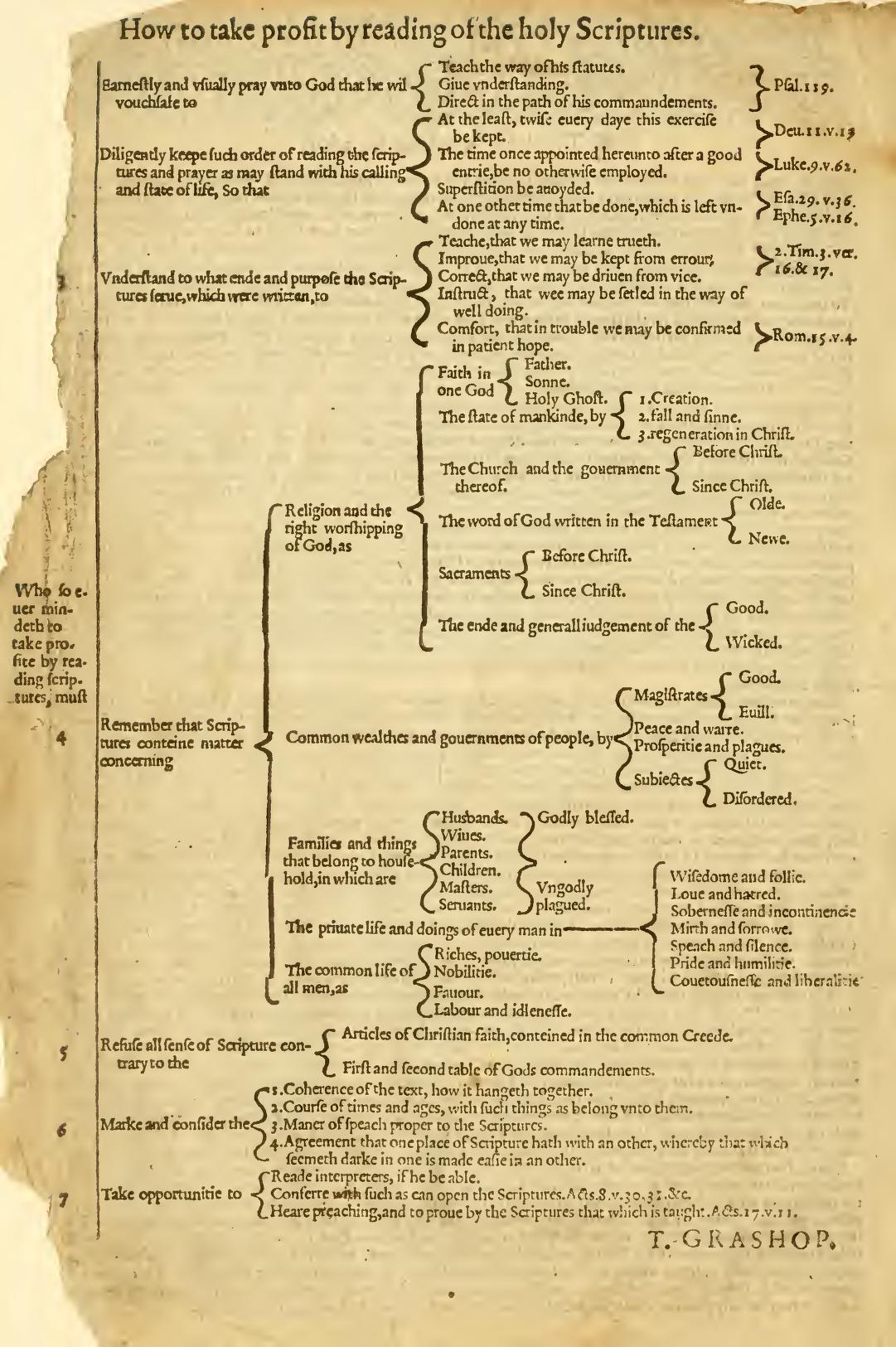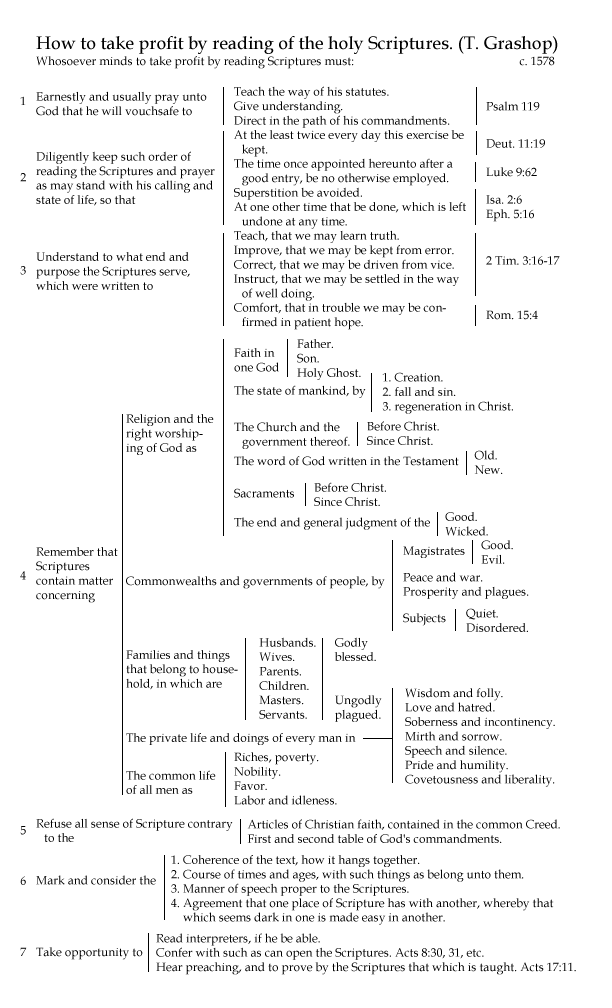Many printings of the Geneva Bible after 1579 contain the following flowchart by T. Grashop. This flowchart reflects the Renaissance obsession with ordering the world using tree diagrams and presents a systematic approach to studying the Bible. I share it here to show that “mind-mapping” Bible study isn’t a new idea; it has extensive historical roots.

Credit: archive.org
Below is a reproduction I created with modernized spelling and design. I particularly want to note the reference to Isaiah 29:36 in this chart. This verse doesn’t exist. If anyone knows what verse Grashop might have meant, especially as it relates to “Superstition be avoided” when studying the Bible, I’d be interested in correcting this 400-year-old typo. Sean Boisen in the comments presents a plausible case that it should be Isaiah 2:6.
Also available in PDF: 8.5×11 inches or 8.5×14 inches (full size).
I consider all these Grashop-related files to be in the public domain; if you want to reuse them, you don’t need to credit anyone.

I suspect your typo is actually Isaiah 2:6: the NIV family of translations has
“You, LORD, have abandoned your people, the descendants of Jacob. They are full of superstitions from the East; they practice divination like the Philistines and embrace pagan customs.”
However, Grashop clearly wasn’t reading the NIV, and the Geneva Bible of 1599 has
“Surely thou hast forsaken thy people, the house of Jacob, because they are full of the East manners, and are sorcerers as the Philistines, and abound with strange children. ”
(https://www.biblegateway.com/passage/?search=Isaiah+2%3A6&version=GNV) According to NICOT there’s some uncertainty about how best to translate this phrase, and that’s reflected in considerable variety in modern translations.
I also can’t explain how 2:6 might have turned into 29:36.
That sounds plausible to me. Sean wins the prize for solving the 400-year-old mystery. I’ve updated the modern images and PDFs above.